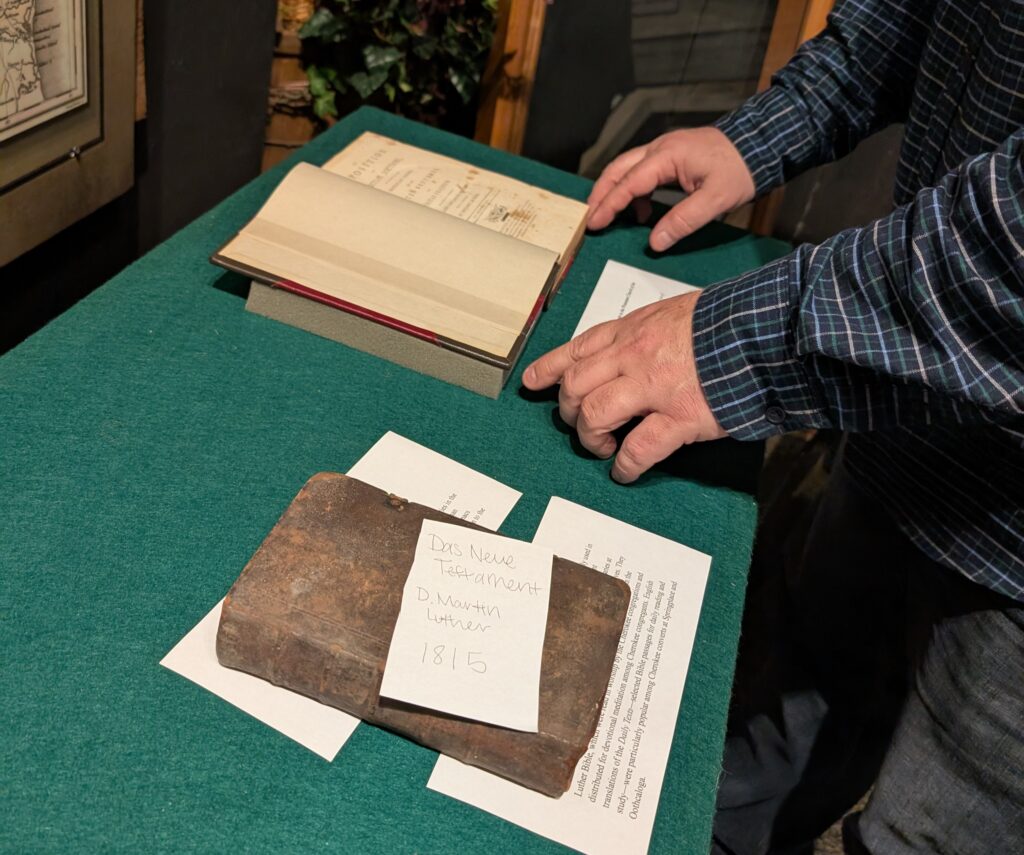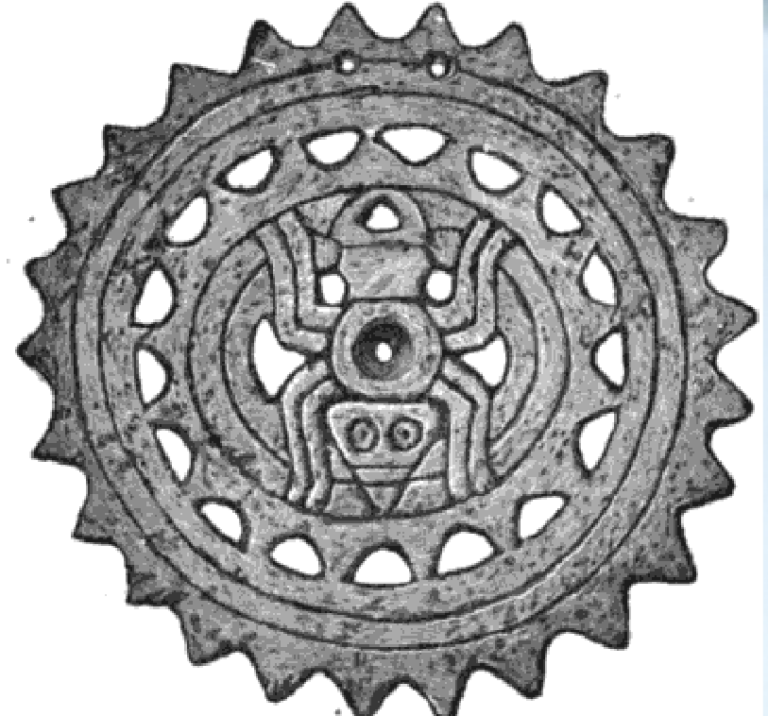Pictured: A shell gorget depicting a water spider, a popular image in traditional Cherokee iconography, and a stained glass window displaying the Moravian Seal at Trinity Moravian Church in Winston-Salem, NC. (Image courtesy of J. Jackman).
By Suzy Alstrin
This weekend, on April 5th, 2025, a new temporary exhibition opens at the Funk Heritage Center (FHC) and Bennett History Museum. Titled We Neighbors Would Meet Together: Oothcaloga Moravian Mission, Integration, and Cherokee Identity, the exhibition sheds light on the early 1800s and the impact of the Moravian Protestant missionaries and the Cherokee people had on each other.
FHC Director Jeff Bishop and Professor Emerita of Wake Forest University Dr. Ulrike Wiethaus consulted on the project, and Matthew Gramling of the Bandy Heritage Center for Northwest Georgia and the Georgia Trail of Tears Association (GA TOTA) served as the curator. “The story of the Moravian missionaries and their role in Cherokee cultural integration, nationalization, and resistance to Indian removal is largely unknown to the general public,” emphasized Gramling. “We look forward to sharing this important and underappreciated story, which we hope will increase awareness to endangered sites such as the Oothcaloga Mission Cemetery.”
Museum visitors can view the exhibition through June 29th, during regular museum business hours. The exhibition’s opening day is free and open to the public. It includes a special lecture at 2 p.m. by Wanda Patterson, a founding member of the Georgia chapter of GA TOTA. Patterson will recount the captivating story of Moravian activity in the Cherokee Nation, highlighting the cross-cultural exchanges between the missionaries and the Cherokee through the creation of mission stations and schools in present-day Chatsworth and Calhoun, Georgia. Following an invitation by the Cherokee National Council, they provided local Cherokee with religious instruction and an English-based education. The missions also had a significant influence on Cherokee nationalization efforts.
For history enthusiasts and anyone eager to explore this often-overlooked aspect of Cherokee history, the We Neighbors Would Meet Together exhibit promises to be a thought-provoking and enlightening experience. Funding for the exhibition was made possible in part by a GA TOTA grant from Georgia Humanities.




